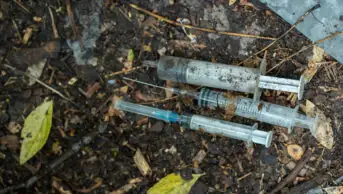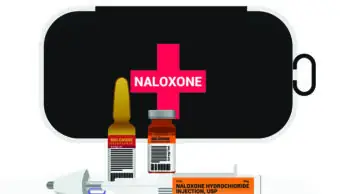
Shutterstock.com
New data show that nitazenes were linked to 179 deaths in England that were reported to the Office for Health Improvement and Disparities (OHID) or the National Crime Agency (NCA) between 1 June 2023 and 31 May 2024.
The publication of the data on 3 October 2024 follows the UK government’s decision to designate 14 nitazenes as controlled class A drugs in March 2024, following advice from the Advisory Council on the Misuse of Drugs.
A form of synthetic opioid, 2-benzyl benzimidazole — or nitazene — can range from tens to many hundreds of times more potent than morphine, putting people at high risk of overdose.
The figures, published by the OHID, which is part of the Department of Health and Social Care, show that protonitazene was linked to the most reported deaths — in 73 out of the 179 deaths. Some 46 deaths were linked to N-desethyl isotonitazene, while metonitazene was detected in 34 deaths.
The report noted that in some deaths, more than one nitazene was detected by laboratory testing.
In a report alongside the data, OHID said that the figures were unlikely to include all deaths involving synthetic opioids in that time frame, because the numbers were based on individual cases reported to OHID or NCA through different routes, “rather than analysis of a comprehensive database of all drug deaths”.
“There were no deaths between June 2023 and May 2024, in which OHID and the NCA confirmed the involvement of illicit fentanyl, or analogues of fentanyl (which have a similar molecular structure), without nitazenes also present,” the report added.
Caroline Copeland, senior lecturer in pharmacology and toxicology and director of the National Programme on Substance Abuse Deaths at King’s College London, said: “[The data demonstrate] that nitazenes are a clear and present danger to people who use drugs in the UK.
“There is little evidence for an active user market for nitazenes, with their use largely a result of them being included as adulterants in other drug preparations such as fake diazepam (Valium) tablets or heroin,” she added.
“We therefore cannot focus harm reduction efforts against nitazenes specifically. Rather, we need to commit to reducing the overall demand for drugs by providing both health and social support to the population of people who use drugs to address the problems they face, which have caused them to turn to drug use as a coping mechanism.”
Amira Guirguis, chair of the Royal Pharmaceutical Society’s science and research committee and MPharm programme director at Swansea University Medical School, highlighted that limitations in detection of nitazenes could “significantly impact the OHID reported numbers”.
“There is still limited knowledge about the detection limits of nitazene analogues using various detection techniques and sample types. As such, the actual number of deaths related to these substances may be underreported,” she said.
OHID said it is working with other government partners, including the government’s Synthetic Opioids Taskforce, to establish an enhanced drugs surveillance and early warning system.
A spokesperson for the DHSC has confirmed that these data will be included as part of the early warning system publications, going forward.
1 comment
You must be logged in to post a comment.



What was nitazenes made for, obviously pain, but which type of pain, was it for animal use or human or both, and is it hard to get the precursas to make it, China as usual seems to be the main illegal source of it that ends up on the street in the UK, cut with base drugs and transported to the UK via the canabis and cocaine smuggling routes, so its the same people, south American Cartels working with eruopean mafias, and crooked UK port authorities, the usual suspects,